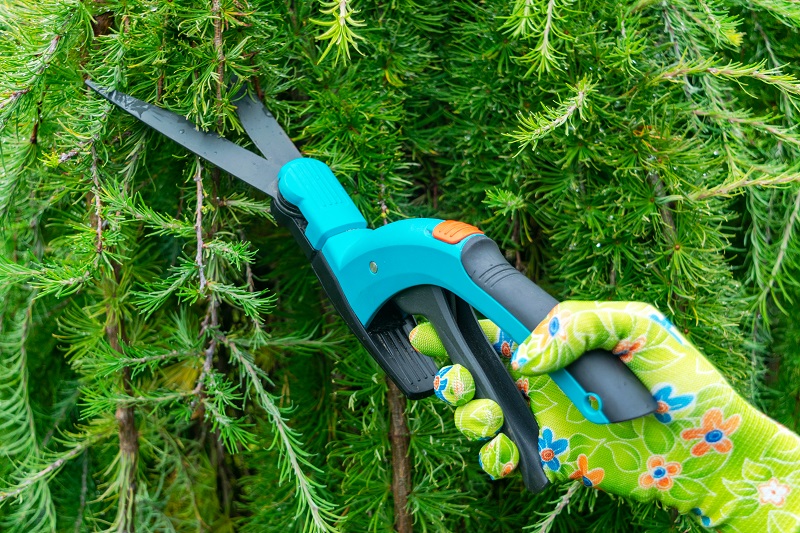A garden is a luxury in today’s setting. Having even a small lawn to hang the hammock or set a swing with trees housing birds and greenery, loads and loads of greenery to greet your city sore eyes is a dream for many and a reality of some. But letting the dream garden grow unprecedented isn’t short of inviting some unwanted guests and troubles. And this holds especially if you have some sturdy evergreens in your backyard. One of the best ways to ensure trees are healthy is to opt for tree pruning routine. Pruning is a tree maintenance procedure. Landscape trees need a higher level of care and maintenance for their structural integrity and aesthetics. Pruning requires an understanding of tree biology. Improper pruning can create lasting damage or shorten the tree’s life.
What is Tree Pruning?
When your hair grows wild, you trim it and cut it. Often cutting has nothing to do with hygiene and everything to do with style. The same reason is applicable to Fortworth tree pruning experts. Some prune trees to make sure the tree has a healthy branch base while some prune trees to make them grow in a particular direction to set a certain style. But the job is strenuous and requires an in-depth knowledge of trees, the equipment used and how to properly prune the tree so that its growth and lifespan is not affected. The main aim of pruning is to remove dead branches, to enhance form, and to avoid risk. To increase light and air penetration to the inside of the tree’s crown or the landscape below, trees are pruned. Old trees are pruned as preventive measures, as regular thinning does not necessarily improve the health of a tree.
Tips for tree Pruning for the DIYer
While tree pruning is a task that requires a great deal of knowledge, there isn’t any hard and fast rule about only hiring professionals for tree pruning. Rather, the task of tree pruning often acts as a calming method for the concentration required to prune is high and you need to be aware of what you are doing, in short, you need to be immersed at the moment completely. So, if you are a DIYer and looking for guidance regarding tree pruning, here are what you should know:
- When to prune – the season which you choose to prune your trees matters as the reason you prune depends on it. Confused? Well, to simplify the matter, if you want a full bloom in spring, you should consider tree pruning during the autumn to winter shift. If you want to reshape your tree or want to try bonsai, then summer pruning is the way to go. Most people prefer to prune their tree in the winter or summer. Pruning in the fall is not recommended. In the fall the tree won’t heal at a normal speed and decaying fungi spread spores.
- Why you are pruning the tree – whether you are focusing on thinning the crown or removing dead branches, your reason for tree pruning affects the gears you choose and the steps you follow. When it comes for styling purposes, you need to study the tree and assess which way the tree is leaning towards. If you want to have a straight growth the areas you need to do away with, all these depend on your correct assessment of the tree.
- Tools – having the correct tools will impact your pruning experience. There are varieties to choose from and the kind of pruning job you are doing will help you determine the tools. For example, if you are aiming to prune the tall trees, then the long reach pruner should be in your gardening shed. Similarly, secateurs and gatherers also help in collecting flowers or trimming the delicate stems. Bigger branches require folding saws, pruning saws, and the big chainsaw. For a small tree, a simple bypass lopper can work fine.
- The pruning angles – tree pruning is not just taking the pruner and snipping away the branches. You need to understand the effect the correct angle has on the growth of the branch. First, you should never touch the primary branches of the tree as they form the skeleton and injuring them would be harmful to the tree. Secondly, always keep in mind that the underside of the branch should not be made too short. Whether you are thinning or raising the tree will also impact where to cut and how much to cut. Making a tree top-heavy should be avoided at all cost.
- Gather knowledge – tree pruning is an art that takes time to develop. The more you read about the trees and their blooming patterns, the more you will understand what should be done.
Benefits for tree pruning
While tree pruning adds to the aesthetic value of the garden and the tree, it also helps keep the tree healthy. Trees too can be trained from a young age to grow in a particular direction with a strong framework. This magic is all in the correct pruning technique. http://credit-n.ru/zaymyi-next.html
